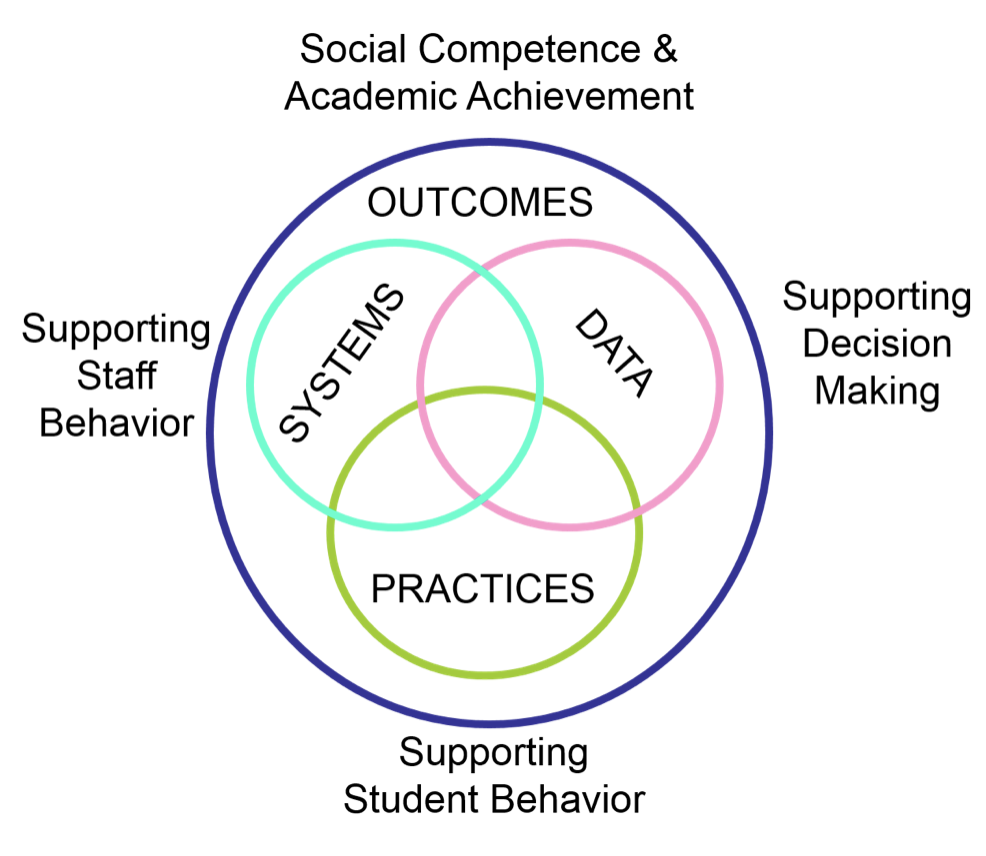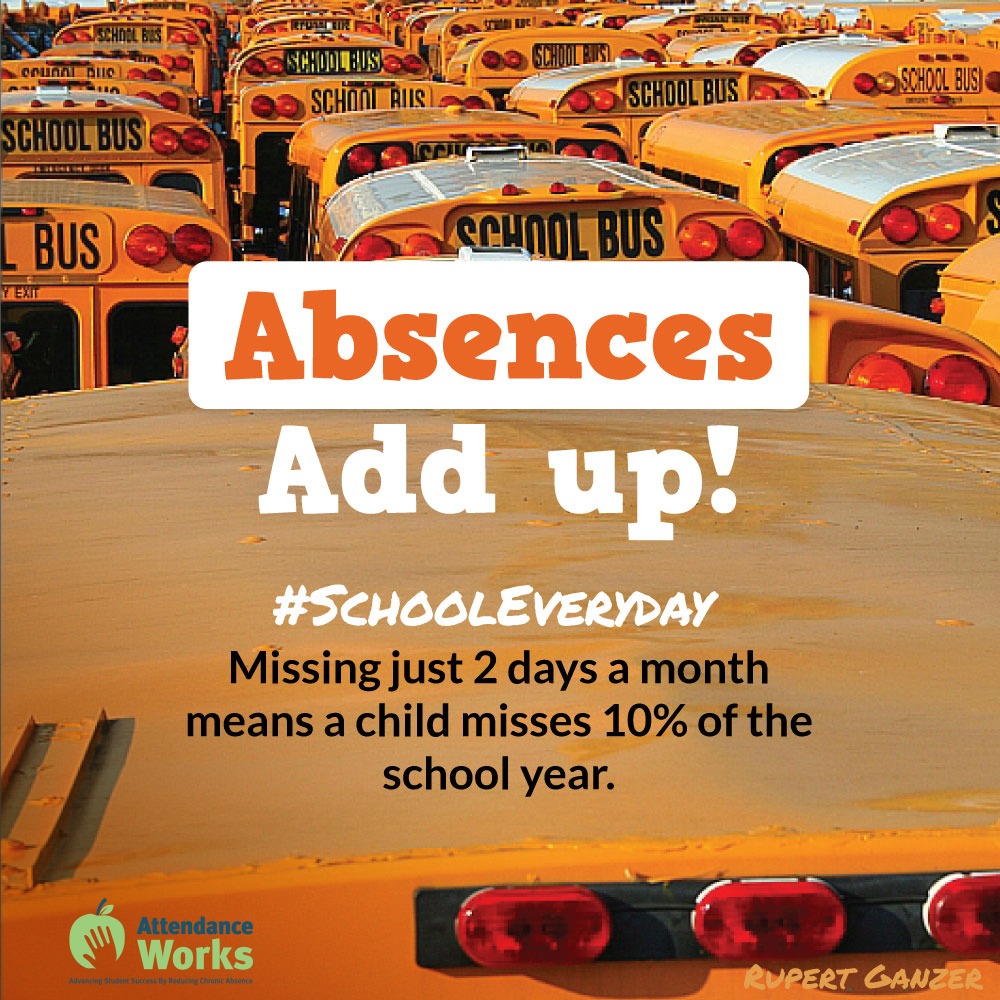Culture & Climate
Subdepartments
Behavior Systems
Address
Stober Building
3301 Stober Road,
Louisville, KY 40213
Contact Us
Saundra Hensel
Manager, Behavior Systems
(502) 485-6526
saundra.hensel@jefferson.kyschools.us
About Us
The Behavior Systems Department ensures comprehensive support to schools in implementing Positive Behavior Interventions and Supports (PBIS) and Restorative Practices (RP) in JCPS schools. Our department trains schools on implementing these evidence-based approaches to cultivate a positive school community, enhance engagement, and foster relationships among students and staff. We continually expand our training and implementation efforts to equip staff with effective proactive strategies for addressing behaviors, restoring relationships, and guiding students toward responsible actions and positive alternatives.
What is PBIS?

PBIS, or Positive Behavioral Interventions and Supports, is a proactive framework used in schools to promote positive behavior and improve overall school climate. It's based on data-driven decision-making and offers tiered supports to address students' varying behavioral needs. By setting clear expectations, teaching and reinforcing positive behaviors, and providing targeted support when necessary, PBIS aims to create a positive and supportive learning environment for all students.
What is Restorative Practice?
Restorative Practice (RP) is a set of strategies educators use WITH students to:
Develop supportive relationships (proactive)
Build community (proactive)
Respond to challenging behavior (responsive)
JCPS began implementing Restorative Practice in 2016. Restorative Practice, or RP, is an equitable and proactive set of strategies building community and a sense of belonging, as well as for addressing conflicts and behavior concerns. RP focuses on repairing harm and restoring relationships. Instead of simply punishing a child for misbehavior, restorative practice encourages them to understand the impact of their actions and take responsibility for them. It's about helping students learn from their mistakes and repair the harm done. In JCPS, 45% of schools have been trained and are implementing RP. By using Restorative Practice, we aim to build a supportive and respectful community where everyone feels a sense of belonging and feels valued.
"The fundamental premise of restorative practice is that people are happier, more cooperative, and productive, and more likely to make positive changes when those in authority do things WITH them, rather than TO them, FOR them, or NOT at all." Ted and Susan Wachtel, International Institute for Restorative Practices
Ted Wachtel
International Institute for Restorative Practices
Bullying Prevention
Quick Links
Address
Stober Building
3301 Stober Road,
Louisville, KY 40213
Contact Us
Bullying Prevention
(502) 485-7527
jcps.bullyingprevention@jefferson.kyschools.us
About Us
The Bullying Prevention Department provides educational resources and support to JCPS stakeholders to increase awareness, reduce bullying behavior, and improve our schools and district's positive culture and climate. We offer presentations and resources on bullying prevention to all stakeholders and monitor and distribute Tipline reports. We also observe students in the classroom, offer recommendations, and conference with students, staff, and parents upon request.
Bullying Resources
Student Behavior Support
Quick Links
Contact Us
Dr. Naomi Handley
Student Behavior Support Team Manager
External: (502) 485-6792
Internal: (502) 400-6792
naomi.handley@jefferson.kyschools.us
About Us
The Student Behavior Support (SBS) team works with K-12 students (non-ECE) who exhibit extremely disruptive behaviors to enhance positive outcomes and reduce suspensions, incidents, and referrals. SBS professionals collaborate, coach, and consult with school staff to create individualized behavior support plans, monitor and analyze outcomes, and gradually reduce direct support as students exhibit safe and conducive behaviors. Replacing unacceptable behavior with prosocial and healthy responses increases opportunities for deeper learning.
Project Prevent
Contact Us
Dr. Naomi Handley
Student Behavior Support Team Manager, Project Prevent Grant Director
External: (502) 485-6792
Internal: (502) 400-6792
naomi.handley@jefferson.kyschools.us
Project Prevent Community Partner: Volunteers of America Restorative Justice (VOA-RJ)
Address
Stober Building
3301 Stober Road
Louisville, KY 40213
About Us
The JCPS Project Prevent grant, federally funded by the U.S. Department of Education, is designed to mitigate the effects of community violence on students and families.
Pupil Personnel
Student Records and Transcripts
Homeschool
Attendance
Do you have questions about your student’s attendance? Please contact the student’s school. Schools record and maintain student attendance information. Guardians can monitor attendance throughout the year via Campus Parent.
Kentucky Revised Statute (KRS), states: “... any child who is six (6) years of age, or who may become six (6) years of age by August 1, shall attend public school or qualify for an exemption as provided by KRS 159.030. Any child who is five (5) years of age, or who may become five (5) years of age by August 1, may enter a primary school program” or may wait until the child is 6 years old. To apply for school, complete school forms, or access Campus Parent click here.
TRUANCY : Any pupil who has been absent from school without valid excuse for three (3) days or more, or who has been tardy without valid excuse on three (3) days or more, is a truant. A pupil who has been reported as a truant two (2) or more times is a habitual truant.
CHRONIC ABSENTEEISM: Kentucky Department of Education (KDE) defines chronically absent as a student who is present 90% or less of full-time equivalency.
HOUSE BILL 611 Amends KRS 159.140 to require a director of pupil personnel to report to the county attorney if a parent or guardian has allowed a child in:
kindergarten to grade five to be absent without an excuse for 15 or more days or if a minor in grade 6 through 12, who is a habitual truant, is absent without an excuse for 15 or more days; and amends KRS 610.030 to require that a diversion agreement for a child against whom a complaint alleging truancy has been filed shall require that if the child is absent without an excuse four or more times during the diversion, the child will immediately be considered to have failed diversion and be referred to the county attorney for formal court action, to require that a diversion agreement not exceed 12 months, and to make conforming changes.
TYPES OF ABSENCES:
EXCUSED (GREEN ABSENCES)
Absences for the following reasons can be excused and do not count towards truancy, however they are included in chronic absenteeism calculations.
Death or severe illness in the pupil's immediate family.
Illness of the pupil, including mental or behavioral health for up to 10 days unless one of the following exceptions are approved.
Physician Exemption of Parent Notes Parent/Guardians may request an exception to board policy 09.123 and request an extension of parent notes for excused absences beyond 10 days with Physician approval.
Religious holidays and practices
PRINCIPAL DISCRETION: Other valid reasons as determined by the Principal
EXCUSED EXEMPT (GRAY ABSENCES)
Kentucky state statute allows certain absences to be included as instructional time. These excuse codes do not count against student attendance.
Late Bus
One (1) day for attendance at the Kentucky State Fair (SF) - Need ticket stub
Documented military leave
One (1) day prior to departure of parent/guardian called to active military duty;
One (1) day upon the return of parent/guardian from active military duty; Armed Forces Day
Visitation for up to ten (10) days with the student’s parent, de facto custodian, or person with legal custody who, while on active military duty stationed outside of the country, is granted rest and recuperation leave (Armed Forces Rest and Relaxation)
Ten (10) days for students attending basic training required by a branch of the United States Armed Forces (BT)
Students participating in any of the page programs of the General Assembly
The Educational Enhancement Opportunity (EHO) as outlined in KRS 159.035 provides a mechanism for students to be counted as present despite being absent from school. This opportunity applies when students engage in educational activities outside of the school environment that offer significant educational value and are aligned with Kentucky's core curriculum. Completed and signed form must be on file prior to the EHO.
UNEXCUSED (RED ABSENCES)
Absences without notes or absences not approved in Student Support & Behavior Intervention Handbook.
Do you have questions about your student’s attendance? Please contact the student’s school. Schools record and maintain all student attendance information.
Student Relations
Specialized Options
Liberty High
Phoenix School of Discovery
Georgia Chaffee Teenage Parent Program (TAPP)
Pathfinder School of Innovation
Behavior Support Schools
Breckinridge Metropolitan High
Minor Daniels Academy
About Us
The Office of Student Relations provides behavior support for schools, parents, and students. It offers resources to cope with substance abuse and other issues that can hinder learning and assists in placing students into the appropriate Area 5 schools.
Applying to Middle and High Specialized Options
Students and families interested in enrolling in a Specialized Option (Liberty, Phoenix School of Discovery, TAPP, or Pathfinder School of Innovation) should complete the online referral/application.
For questions or additional assistance, please get in touch with our office directly.
2025-26 Specialized Options Application Period
March 31, 2025–February 27, 2026
2026-27 Specialized Options Application Period
March 30, 2026–February 26, 2027
Safe Crisis Management
Our Philosophy
The Five C's
1. Committed
We are Committed to the welfare, positive growth, and development of individuals served.
2. Care
We Care about individuals being served.
3. Consistency
We know that when organizations provide Consistency, they achieve better outcomes regarding staff retention, staff performance, and individual growth.
4. Competent
We believe staff must be Competent when working with individuals.
5. Courage
We believe in professional Courage: "doing what's right even when it's difficult."
JKM Training provides Safe Crisis Management (SCM) training to promote professional training that respects the dignity of all individuals. To get certified, you must complete the online SCM module and pass written and physical skill tests with a minimum score of 85 percent. The physical SCM training is available in summer and winter sessions, and you must attend a four-hour practice to maintain your certification before the expiration date listed on your SCM certificate.
SCM adheres to best practice guidelines and complies with federal and state statutes defined by 704 KAR 7:160 Use of Physical Restraint and Seclusion in Public Schools. Additional information on restraint and seclusion can be found in the 2023-24 Student Support and Behavior Intervention Handbook (pages 41–44).
How Can We Help?
The Violence Prevention team assists any JCPS student directly impacted by gun violence. The team will meet with the student and family impacted by gun violence and then determine next steps based on the needs of the individual student.
Call the Director of Violence Prevention if:
You know a student impacted by gun violence.
A student is returning to a JCPS school from an outside agency.
Call the Director of Court Liaison if you need:
Information regarding the juvenile court process.
Information around specific student information related to a
court hearing.

